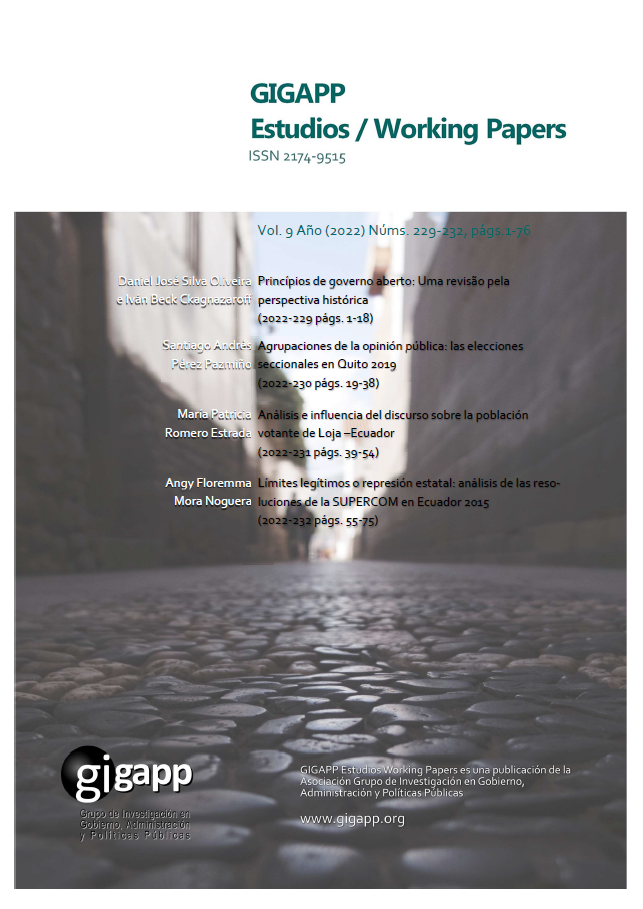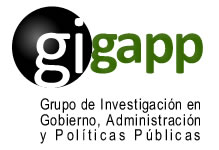Legitimate limits or State Repression
Analysis of the SUPERCOM resolutions in Ecuador 2015
Abstract
This article focuses on the relationship between public communication policy and state censorship practices, based on the analysis of administrative resolutions issued by the state control entity during 2015 in Ecuador. This was a key moment in the conflict between the Government and the media, which was marked by questions focused on the apparent excessive state intervention, since the implementation of the Organic Law of Communication (2013), which resulted in the creation of a control entity with powers of surveillance and imposition of sanctions on the media that do not comply with the regulations. In this order, based on the conception of state censorship raised by Owen Fiss (2010), a documentary analysis was conducted regarding four resolutions selected from a universe of 92 resolutions issued by this Institution during that period. The results show that there were certain actions and omissions that configure a form of subsequent state censorship and a clear context of confrontation between the media and the governing body.
Downloads
References
Bertoni, E. 2011. “La libertad de expresión en la Constitución y los riesgos de abrir una caja de pandora” en: La constitución 2020 48 propuestas para una sociedad igualitaria (cord) Gargarella, R. Buenos Aires: Siglo veintiuno editores.
Chalaby, J 1998. “Political communication in presidencial regimens in non consolidated democracies”. En: Gazette, 5: 433-449
Gargarella, R. 2005. “Carta abierta sobre la intolerancia. Apuntes sobre derecho y protesta. Buenos Aires: Siglo veintiuno editores.
Ferrajoli, L. 2004. “Libertad de información y propiedad privada. Una propuesta no utópica” en: Carbonell, M (comp.) Problemas contemporáneos de la libertad de expresión. México: Editorial Porrúa: 129-158.
Ferrajoli, L. S.F. “Democracia constitucional y derechos fundamentales. La rigidez de la constitución y sus garantías”.
Fiss, O. 2010. “Democracia y Disenso, Una teoría de la libertad de expresión”. Buenos Aires: Ad-Hoc S.R.L. 2004. “Libertad de expresión y estructura social” en: Carbonell, Miguel (comp.) Problemas contemporáneos de la libertad de expresión, Mexico: Editorial Porrúa: 13-37
Fiss, O. 2007. “¿Por qué el Estado? En Carbonell, Miguel (ed) Teoría del neoconstitucionalismo. Madrid: Editorial Trotta, S.A.
Fontaine, G. 2015. “El Análisis de Políticas Públicas concepto, teorías y métodos”. Quito: FLACSO Ecuador.
Labate, C, Lozano, L, Marino S, Mastrini G y Becerra M. 2013. “Abordajes sobre el concepto de concentración en Las políticas de comunicación en el siglo XXI”. Ed. Mastrini, G, Bizberge, A, y De Charras, D. Buenos Aires: La crujía ediciones.
Loreti, D y Lozano, L. 2014. “El derecho a comunicar Los conflictos en torno a la libertad de expresión en las sociedades contemporáneas”. Buenos Aires: Siglo veintiuno.
Loreti, D. 2009. “Los aportes de la Corte Interamericana de Derechos Humanos en materia de prevención contra la censura previa”.
Picard, R. 1982. “State Intervention in U.S. Press Economics”. Gazette 30 Amsterdam Instituut voor Perswetnschap: 3-11.
Sunstein, C. 2003. “República.com internet, democracia y libertad”. Barcelona: Editorial Paidós.
Van Dijk, J. 1996 “Estructura y funciones del discurso una introducción interdisciplinaria a la lingüística del texto a los estudios del discurso”. Ciudad de México: siglo veintiuno editores, S.A. de C.V.
Villaverde, Ignacio. 2004. “Hacia un nuevo paradigma constitucional de las libertades de expresión e información” en: Carbonell, Miguel (comp.) Problemas contemporáneos de la libertad de expresión, México: Editorial Porrúa: 1-12.
Documentos:
Ecuador. Constitución de la República del Ecuador de 20 de octubre de 2008. Registro Oficial 449.
Ecuador. Ley Orgánica de Comunicación de 25 de junio de 2013. Registro Oficial 22
Ecuador. Reglamento para el procesamiento de infracciones administrativas a la Ley Orgánica de Comunicación 2013
Consejo de Regulación Resolución y Desarrollo de la Información. CORDICOM-2013-005
Consejo de Regulación Resolución y Desarrollo de la Información. 2004. Registro de medios.
Copyright (c) 2022 Angy Floremma Mora Noguera (Autor/a)

This work is licensed under a Creative Commons Attribution-NonCommercial-ShareAlike 4.0 International License.
Those authors who have publications with this journal, accept the following terms:
a. Authors will retain their copyrights and guarantee the journal the right of first publication of their work, which will be simultaneously subject to the Creative Commons Attribution-NonCommercial-ShareAlike 4.0 International (CC BY-NC-SA Recognition License). 4.0) that allows third parties to share the work as long as its author and its first publication are indicated in this journal.
Under this open access license, readers (users) can:
- Share — copy and redistribute the material in any medium or format
- Adapt — remix, transform, and build upon the material
Under the following terms:
-
Attribution — Users must give appropriate credit, provide a link to the license, and indicate if changes were made. You may do so in any reasonable manner, but not in any way that suggests the licensor endorses you or your use.
-
NonCommercial — Users may not use the material for commercial purposes.
-
ShareAlike — If remix, transform, or build upon the material, users must distribute your contributions under the same license as the original.
- No additional restrictions — Users may not apply legal terms or technological measures that legally restrict others from doing anything the license permits.
b. Authors may adopt other non-exclusive license agreements for the distribution of the version of the published work (eg: deposit it in an institutional telematic archive or publish it in a monographic volume) provided that the initial publication in this journal is indicated.
c. Authors are allowed and recommended to disseminate their work through the Internet (e.g. in institutional telematic files or on their website) before and during the submission process, which can lead to interesting exchanges and increase citations of the published work. (See The effects of open access).



